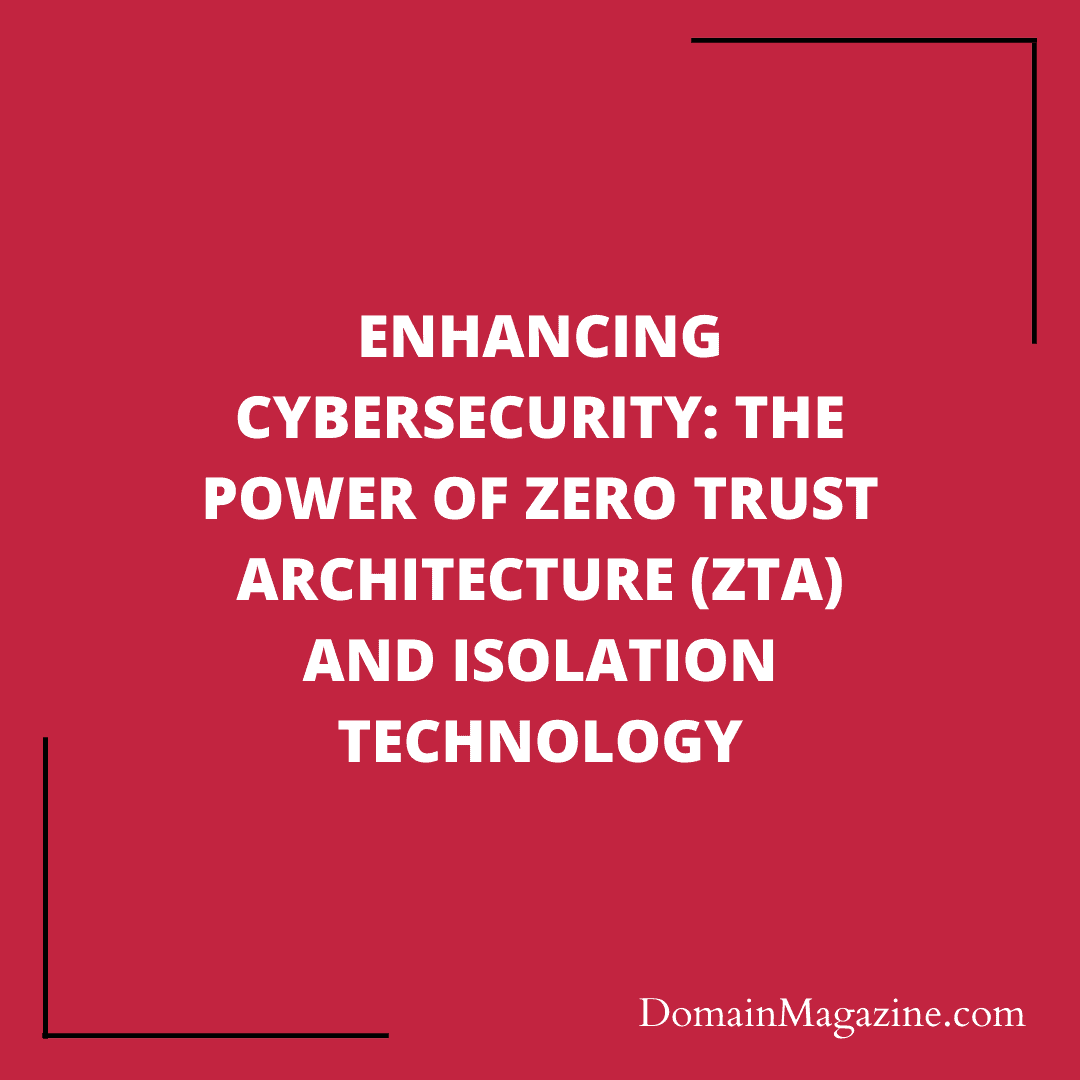In today’s digital landscape, where cyber threats are constantly evolving, protecting sensitive information and systems has become paramount for governments and organizations alike. Two innovative approaches gaining traction in the cybersecurity realm are Zero Trust Architecture (ZTA) and Isolation Technology. In this article, we will delve into these concepts, understand their significance, explore implementation challenges, and propose measures to overcome them.

The Evolution of Zero Trust Architecture:
Traditional security models were built on the assumption that everything within a network could be trusted. However, with the proliferation of interconnected systems, cloud computing, and remote work practices, this approach is no longer effective. Zero Trust Architecture flips the script by assuming that nothing and no one can be trusted, and emphasizes continuous verification and validation.
Embracing Zero Trust Principles:
Zero Trust Architecture requires every user and device to prove their security, even within the core network. It treats all external systems as potentially malicious, regardless of their apparent legitimacy. By implementing strict identity and access management, protecting devices and network security, as well as safeguarding applications and data, federal agencies can blanket their entire technology stack in Zero Trust protection.
Harnessing the Power of Isolation Technology:
Isolation Technology is a game-changer in cybersecurity, providing an additional layer of protection against internet-born threats, including AI-powered malware. This approach establishes an air gap between government IT systems and the internet, ensuring web browsers are never directly connected to the outside world.
Secure Browsing Environment:
Isolation Technology scans and tests all content before it reaches the agency, checking links and attachments for malicious intent. By running attachments in a controlled sandbox environment, agencies can analyze their behavior without putting their systems at risk. This technology also allows employees to access the internet without compromising their identity or location, making it particularly valuable for those dealing with sensitive information.
Benefits and Cost Savings:
In addition to shielding against cyber threats, Isolation Technology offers other advantages. It removes the need for expensive application upgrades, saves network bandwidth, and reduces false positives compared to traditional cybersecurity approaches. The Department of Defense estimates a cost saving of $300 million by protecting users through browser isolation.
Challenges in Implementing ZTA and Isolation Technology:

While ZTA and Isolation Technology hold immense promise, their implementation can pose challenges for federal agencies.
Legacy Systems:
Many federal IT systems are outdated and represent a substantial investment. Upgrading them can be a daunting task, both technically and financially. The rip-and-replace approach is often infeasible due to budget constraints, making it necessary to find alternative solutions.
Budget Limitations:
Agencies operate on strict budgets, and investing in ZTA-based improvements may require additional funding sources. While programs like the Technology Modernization Fund and Continuous Diagnostics and Mitigation offer support, agencies must navigate the complexities of securing adequate resources.
IV. Overcoming Implementation Challenges:
Phased Approach:
To overcome the hurdles of legacy systems, agencies can adopt a phased implementation approach. This entails gradually integrating ZTA and Isolation Technology into specific segments or applications, prioritizing those with higher risk levels or greater security needs.
Leveraging Partnerships:
Collaborating with private-sector technology partners can provide federal agencies with access to expertise and cost-effective solutions. Public-private partnerships can help bridge the gap between legacy systems and modern cybersecurity practices.
Proactive Modernization Strategies:
Agencies should proactively plan for system modernization, aligning it with long-term cybersecurity objectives. This requires strategic budgeting, leveraging available funding sources, and focusing on technologies that provide long-term benefits.
As cyber threats continue to evolve and multiply, implementing robust cybersecurity measures becomes indispensable for federal agencies. Zero Trust Architecture (ZTA) and Isolation Technology offer a powerful combination to bolster security, safeguard sensitive information, and protect against advanced threats. Although implementation challenges exist, such as legacy systems and budget limitations, agencies can overcome them through phased approaches, partnerships, and proactive modernization strategies. By embracing these innovative approaches, federal agencies can navigate the new era of online threats with confidence and resilience.


Join the Discussion